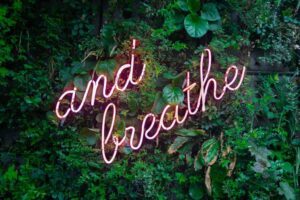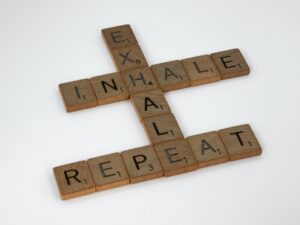 Many people suffer from some degree of anxiety, and while the level may differ, most of the symptoms are the same. Finding relief from the effects of anxiety can be difficult, and not everyone wants to turn directly to medication. Learning some techniques related to breathing for anxiety can help your body overcome anxious symptoms.
Many people suffer from some degree of anxiety, and while the level may differ, most of the symptoms are the same. Finding relief from the effects of anxiety can be difficult, and not everyone wants to turn directly to medication. Learning some techniques related to breathing for anxiety can help your body overcome anxious symptoms.
Once you learn to breathe when you experience anxiety, it can reduce the length of time that you go through the episode. The best way to benefit from breathing for anxiety is to practice these techniques daily, just like you would practice any new skill. This will ensure that you are ready to combat when anxiety strikes.
How do these exercises help with anxiety?
When you learn to breathe for anxiety you are changing how the nervous system reacts to anxiety. As you take deep breaths, you activate the parasympathetic nervous system. This will regulate the heart rate, slow breathing, and lower blood pressure. All of which are the main symptoms of anxiety.
This is important because it prevents your body from hyperventilating and levels out the oxygen and carbon dioxide, which will reduce dizziness and muscle tension. When there is not enough oxygen in the blood, the body will experience other distress symptoms.
Breathing for anxiety: practical exercises.
Here are a few of the more common breathing for anxiety exercises that are helpful during an anxiety attack.
Basic breathing exercise.
Simple and easy-to-learn breathing for anxiety exercise begins with getting comfortable. It doesn’t matter if you are standing, sitting, or lying down as long as you can be in a position that will help you find relaxation.
 Lying down: place your arms at your side with a bit of space between them and your sides. If you need to bend your legs, ensure your feet are flat.
Lying down: place your arms at your side with a bit of space between them and your sides. If you need to bend your legs, ensure your feet are flat.
Sitting or standing: place both feet flat on the ground at a width that lines up with your hips.
- Allow your breath to flow into your diaphragm (belly) without having to force it.
- Breathe in through your nose and exhale through your mouth.
- Breathe regular breaths gently as you count from 1 to 5.
- Exhale your breath gently while counting from 1 to 5.
- Try to repeat for 5 minutes.
4-7-8 breathing exercise.
This exercise was created to help calm the nervous system quickly. It can be done sitting up or lying down.
- Place one hand on your stomach and one on your chest.
- Count to four as you inhale slowly and deeply from your stomach (diaphragm).
- Hold your breath for a count of seven.
- Exhale while counting to eight. Aim to have all the air out of your lungs by the time you get to eight.
- Repeat until you feel calm, usually three to seven times.
- Take time to sit and feel the calmness enter your body before resuming your previous activity.
Abdomen breathing exercise.
When you use your diaphragm, it takes less work for your body to breathe.
- Sit with your upper body and head relaxed and bend your knees. You can also lie down using a pillow for your knees and head.
- Place one hand on your heart and the other under your rib cage.
- Inhale and exhale through your nose as you pay attention to your chest and abdomen.
- Try to isolate your breathing so that your stomach moves instead of your chest.
Mindful breathing exercise.
 This breathing for anxiety is focused and slow so that you can combat the thoughts that increase the anxiety episode.
This breathing for anxiety is focused and slow so that you can combat the thoughts that increase the anxiety episode.
- Start with taking note of how your body is inhaling and exhaling normally.
- Take a slow, deep breath through your nose.
- Pay attention to your chest and stomach.
- Exhale in a way that is comfortable for you.
- Find a focus word and vocalize during exhale: peace, faith, hope, Jesus, or another word that promotes calmness.
- As you inhale, allow yourself to picture a wave moving over you to remove the negative feelings or thoughts.
Equal breathing exercise.
This form of breathing for anxiety stems from breathing exercises related to yoga. This involves inhaling for the same length as you exhale.
- Get comfortable and close your eyes. Take several breaths and notice how your body is moving.
- Count slowly, 1-2-3-4 as you inhale through your nose.
- Exhale and count the same way.
- Notice how your lungs become full and empty as you take each breath.
Resonant /coherent breathing exercise.
This type of breathing will help you enter into a place of relaxation and calm anxiety.
- Lie down and close your eyes
- Gently breathe through your nose with your mouth closed for six seconds
- Exhale for six seconds. Don’t force the exhale.
- Repeat these steps for a maximum of ten minutes.
Finger breathing.
This breathing exercise is great when you are in a public place and don’t have a space to relax. It is also a great technique to teach children and teenagers.
- Start by placing the tip of your thumb to the tip of your pinky
- Slowly take a deep breath in as your thumb travels up your pinky
- Then slowly breath out as your thumb travels back down your pinky
- Continue doing this breathing technique moving to your ring finger, middle finger, and then pointer finger
 Christian counseling for anxiety.
Christian counseling for anxiety.
And he said to his disciples, “Therefore I tell you, do not be anxious about your life, what you will eat, nor about your body, what you will put on.” – Luke 12:22, ESV
These exercises are a tremendous tool to use when you struggle with anxiety. Yet ongoing symptoms that seem to interrupt your daily activities are a good indication that you need to get a better understanding of the origin of the anxiety.
Our bodies were not designed to live in a state of worry and stress. If you find that you are overwhelmed with anxiety, consider contacting me or one of the other Christian counselors in our online directory.
Photos:
“Take a Step Back and Breathe”, Courtesy of Max van den Oetelaar, Unsplash.com, CC0 License; “Inhale, Exhale, Repeat”, Courtesy of Brett Jordan, Unsplash.com, CC0 License; “Refreshment”, Courtesy of Artem Kovalev, Unsplash.com, CC0 License; “Dunes”, Courtesy of Patrick Schneider, Unsplash.com, CC0 License;





